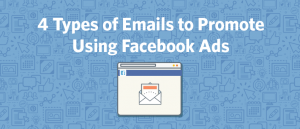
B2B marketing is all about finding out what’s most important to your target audience and seeing how your product or service can fill in the blanks. However, when it comes to marketing to millennials, many find themselves a bit lost.
What’s really important to Millennials? Are they a target audience for the B2B sector? How do you market to them?
In this post, we’ll answer those questions — and you’ll learn how to get into the mind of a Millennial.
First, let’s answer the question…
Who Are Millennials?
The demarcation years that categorize Millennials are a bit disputed. Some say that Millennials are those born between 1980-1996. But, generally speaking…
People born between 1982 and 2004 are typically considered to be of the Millennial Generation.
Now, a lot happened in those 22 years. If you were born in 1982, you likely remember a time when cell phones, email, and the internet were only a dream. Although, you probably were never a part of the workforce without them. On the other end of the spectrum, if you were born in 2004, you probably don’t remember the world before the iPhone, or instant messaging. It’s also very unlikely that you’re reading this post.
Clearly, when we talk about B2B marketing and Millennials, we’re really aiming our marketing artillery at those born closer to the early 1980s, those more likely to be B2B decision makers. And, studies show that they are entirely relevant in the B2B sector. In fact…
46% of Millennials are making purchasing decisions in the B2B sector.
So is it necessary to learn how to market to Millennials? You betcha!
The target Millennial audience is now in their early to mid-thirties. They are comfortable with technology, but they weren’t weaned on it. They may be able to see the pitfalls of a generation growing up with modern technology, but they also realize that they don’t want to forfeit their own current tech lifestyle.
Millennials in their early to mid-thirties are digital expats. They remember their homeland, filled with afternoons spent outside in the sunshine rather than inside messaging with friends and playing video games online. However, they’re quite content with their current habitat in the land of texting, emails, and Facebook.
What is Really Important to a Millennial?
Although the mere mention of the word “Millennial,” associated with the word “business” may conjure up images of offices filled with ping pong tables, bean bag chairs, boutique coffee shop runs, and afternoon naps, the truth is that they’re not all that different from anyone else.
What do Millennials value?
1. Transparency
No one likes a liar. And the internet makes it pretty easy to present a certain persona, even if it’s not real. However, that bubble bursts pretty quickly when companies don’t live up to expectations. Yelp, Google, TripAdvisor, even the Better Business Bureau, have accustomed Millennials to seeing honest reviews of the performance of any brand, product, or service.
It’s this kind of transparency that Millennials have come to expect from companies.
2. Authenticity
Although I’m not a fan of the current dressing down for work trend, I understand the sentiment behind it. Unlike the generation that entered the workforce in the 1980s — where making money and getting ahead were of prime importance — Millennials want their workspace and their living space to be cohesive. It’s all about doing something you love and not pretending to be someone you’re not.
Years ago, office hours were office hours. However, now that you can be reached night and day by phone, internet, and texting, personal time on weekends and evenings barely exist. So why not make it more comfortable? If work life can be enjoyable and blend seamlessly with the rest of life, why not make every effort to be comfortable and happy?
3. Responsiveness
Since Millennials haven’t experienced a workplace without instant communication, they expect nothing less than immediacy. That’s not to say that they are always demanding but they don’t understand slow response time.
To the Millennial generation, there’s little leeway given for failing to respond rapidly by social media, messaging, text, email… the list is so long, there’s just no excuse for not replying in a timely fashion.
4. Analytics
The Millennial generation is perhaps filled with more doubting Thomases than any other. This only makes sense since they’ve grown up in a world filled with competition.
Think about it. If you were born in the 1950s, how much competition was there for home phone service? Now, think about how many cell phone providers exist. I can think of at least a half a dozen top-tier ones right off the top of my head. And they’re all vying for your business.
Millennials are accustomed to this mentality. They really don’t know anything else. So they want proof, not just talk. Facts and figures speak louder than promises.
How to Adapt Your B2B Marketing to Millennials
Let’s start with a brief buyer persona. We’ll call our gal Millennial Marissa.
Millennial Marissa was born in 1984, so she’s currently 32 years old. Melissa would like to have kids, but there’s still plenty of time for that, so she and her husband are waiting. Marissa loves her profession. It’s not what she went to college for, but the pay is good, and after hefty student bills, she knows that she should be thrilled to have a job at all. Especially since she ended up back at her parent’s house for a couple of years after college.
Marissa has a few friends from college she keeps in touch with, but mostly she hangs out with people from work. Her workday starts early. Sure, she’s not at the office early, but as soon as the alarm goes off in the morning, she checks her phone to see who emailed her since she last checked it at 11 p.m., right before she fell asleep. She answers a few emails from partners overseas since their day is already well underway and they’re waiting for her input on a project.
While standing in line for her Starbucks breakfast, Marissa checks Facebook and replies to a few texts — some personal, some work-related. Then, the day at the office is filled with messaging, video conference calls, and keeping a constant eye on several calendars to coordinate schedules. She has a project that needs to be submitted online, but the platform she’s using seems to have a lot of hiccups so she has to table that while she tweets tech support for help.
I could go on about Marissa, but you likely get a feel for her day. It’s nonstop. So how do you market your product or service to her?
Let’s use our four Millennial values and see how you can apply them.
1. How to be Transparent
Nothing turns a Millennial off more than a company with a poorly-designed website that lacks a strong online presence. How can they know if your company is legit?
Make it easy for them to find out as much about your company as possible. Encourage reviews on sites like Glassdoor, Yelp, and Google. Make sure you’re engaged on social media so that your current customers can publicize their experience with you. Of course, this may open you up to criticism, but if your customer service is up to par, you should have little to worry about.
2. Be Authentic
I was going to write “How to be Authentic,” but if you need to be told how, we have an entirely new problem. You shouldn’t have to think about.
In a practical way, though, reaching out to Millennials is easy if you’re authentic on social media. Do you share pictures on Instagram that aren’t just industry-related? Why not share pics of staff pets? Or the view from your office? Or the offbeat collection of mugs that sits in the break room.
The point is, Millennials want to see your human side. They’re on the clock almost always, so you need to provide a little fun, too.
3. How to be Responsive
Slow response times can kill your reputation with Millennials. Are you doing everything you can to respond quickly? Do you offer a “let us call you” option so that they don’t have to wait on hold? Do you provide tech support through Twitter or chat? If you don’t, it’s time to start. Get rid of the “fill out this form and we’ll contact you sometime” mentality.
4. Provide Proof of Success
With so many automated systems at your fingertips, there’s no reason to not provide detailed analytics. Case studies are your best friend in this instance. A well-written case study reads much like a blog post, but it also provides facts and figures to back up your tale. Did you help a company boost sales very quickly? Great! How quickly and by how much? There’s so much content available that you need to remember that most people skim. So make those facts and figures stand out.
53% of Millennials believe analytics can help them make better decisions. ~IBM
So what do you think? Are you ready to market to Millennials? Hopefully, it doesn’t seem as daunting a task anymore.
However, one avenue we didn’t really unpack here is social media. This is a primary route to reaching most age groups, and yet many B2B companies are still at a loss for how to fully leverage it. If you find that to be true, or if you need a little help re-strategizing your existing social media execution, go ahead and download your free Social Media Prospecting Workbook.
Business & Finance Articles on Business 2 Community
(56)








